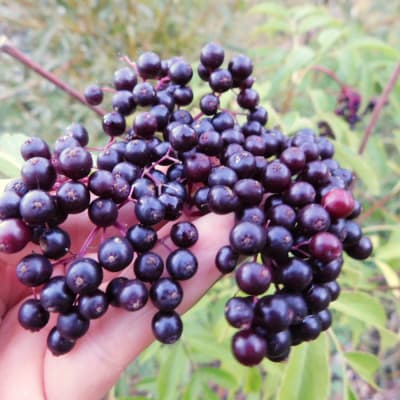Loose medium-sized clusters of golden-green grapes suited for a wide range of blended white wines or use as a single varietal. Fruity, crisp, mineral, with hints of apple and pear. Think Chardonnay. Lineage has eight different types of Vitis species—perhaps this explains its exceptional versatility. Widely planted in Nova Scotia and parts of Quebec. Hardy to –20° or colder.
During the deep freeze of February 2023 that knocked back plants across Maine and the Canadian Maritimes, this vine came through unscathed. Josh Horton, head grower and winemaker at Lightfoot & Wolfville Vineyards, said “…you can make some really delicate, beautiful wines with it, but it’s a workhorse in the sense that it doesn’t matter if it’s a frost, a polar vortex, a lot of rain or wind—it just pushes through, and you always end up with pretty good quality.” Recommended to us by local winemaker Brian Smith of Oyster River Winegrowers in Warren, ME. Z4/5. BACK! (well-rooted vines)
Items from our perennial plants warehouse ordered on or before March 7 will ship around March 31 through late April, starting with warmer areas and finishing in colder areas. Orders placed after March 7 will ship around late April through early-to-mid May, in the order in which they were received.






